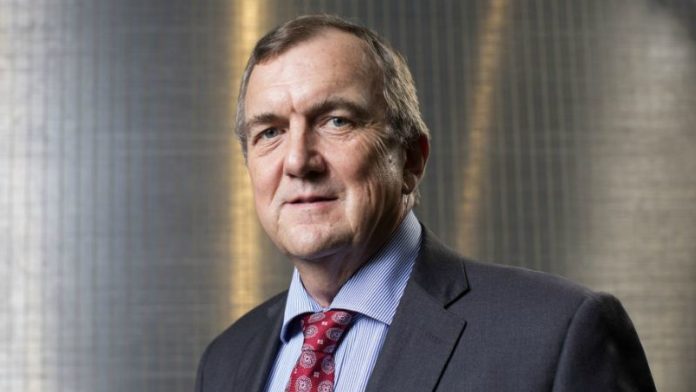
BARRICK Gold upgraded its capital returns programme increasing the base dividend, installing a performance dividend which to be paid from net cash, and unveiling a $1bn, 12-month share buy-back programme.
“We believe that the shares are trading in a price range that does not reflect the value of the company’s mining and financial assets and future business prospects,” said Barrick CEO Mark Bristow in a statement. “We have the financial strength to undertake this program.”
In an interview, Bristow added that: “When shares are considered undervalued it is an obligation to buy them back as it’s a good way to manage money”.
In terms of the performance dividend, Barrick will pay five US cents additional each quarter if net cash totals $500m or below, increasing to a payout of 10c/share per quarter if cash is between $500m and $1bn. Any net cash above that level attracts an additional payout per quarter of 15c/share.
The group closed the 12 months ended December 31 with net cash of $130m following a record cash distribution to shareholders of some $1.4bn. The fourth quarter dividend was increased 11% to 10c/share.
This was despite a slight decrease in net earnings to $2bn from $2.3bn previously. The realised gold price was marginally higher in Barrick’s 2021 financial year coming out at $1,790/oz compared to $1,778/oz in 2020 but production was down. Barrick mined 4.44 million ounces compared to 4.76 million ounces in 2020.
“We have out-performed our peer group but it’s always easier to manage a share price that is softer than when it is highly valued,” said Bristow.
Scotiabank said in a note today that the improved shareholder returns announcement was “mildly positive” for the share price.
“Barrick has never paid back $1.4bn in its history; never,” said Bristow. “This is the fruition of three years of discussions with John Thornton [Barrick chairman] and a lot of due diligence before the gold price improved,” said Bristow of the merger of Barrick with his Randgold Resources in 2019.
Bristow said that during the three years since the merger, the company had focused on developing its best assets. It had six so-called tier one mines but the Tanzanian complex of North Mara and Bulyanhulu was yet to join that group.
“The complex has about 500,000 oz in annual gold production but it needs to get its costs down. We are targeting below $1,000/oz [all-in sustaining costs],” he said. North Mara reported AISC of $1001/oz while Bulyanhulu’s AISC was $891/oz.
ECOWAS indictment
Commenting on the continued political uncertainty in Mali, the west African country where Barrick operates Loulo-Gounkoto – considered one of its tier one operations – Bristow said developments were “an indictment of ECOWAS”.
ECOWAS (Economic Community of West African States) numbers Mali, Burkina Faso and Guinea among its members – countries that have seen their elected governments taken out by military juntas. “It’s a complicated picture.
“ISIS is a complication, but governments in those countries have tended to end up being corrupt. But we haven’t seen any aggression or an attempt to garner short-term benefits from our industry,” said Bristow of the military coup in Mali.
In January, ECOWAS said it would impose sanctions in respect of the movement of cash, people and goods across member borders to Mali after the country said it would push back national elections to 2025.
Mali’s military junta had previously agreed to return the country to civilian rule in February following two coups and a military takeover dating from 2020.
Scotiabank added in its note that a lack of progress in extracting dividends from the Democratic Republic of Congo was a continued negative for Barrick. Barrick operates the Kibali gold mine in joint venture with AngloGold Ashanti. Barrick is owed in excess of $500m in attributable dividends from the DRC government which is being held up by a complication in its Mining Code.











